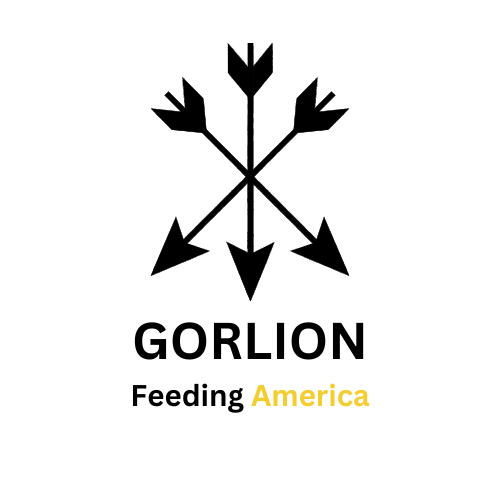A disquieting truth lurks behind the picturesque landscapes of American farmlands: the game is rigged, and it’s rigged in favor of the big players. With the world’s population hurtling towards the 10-billion mark by 2050, the disparities embedded within food production, distribution, and access come into sharp focus. The weight of these inequalities doesn’t discriminate between the struggling small farmers in the United States and their counterparts in far-off developing nations. It’s a grim scenario where small farmers are forced to shoulder the immense burdens of an unforgiving system.
Inequality Close to Home:
In the vast expanse of American agriculture, it’s the small-scale farmers who bear the brunt of an unjust system. These are the passionate individuals who work tirelessly to cultivate the land, their livelihoods often entwined with generations of tradition. But while they toil to nurture the land and provide the nation with sustenance, they must navigate a playing field that seems increasingly stacked against them.
The Power and Influence of the Big Guns:
In the labyrinth of the U.S. food system, it’s the agricultural conglomerates and multinational corporations that dictate the terms. Their influence extends far beyond the farm gate; it reaches deep into the corridors of power. They lobby, they negotiate, and they secure policies that favor their interests. In the name of food security, they exploit their resources to keep their grip on the market, while the small farmers, who should be the backbone of American agriculture, find themselves fighting an uphill battle.
Climate Change and Unjust Consequences:
Climate change is not a respecter of person or scale. The same climate-induced chaos that ravages far-off nations mercilessly hammers the small farmers of America. As the world witnesses more frequent and severe extreme weather events, droughts, and rising sea levels, the impacts on agricultural productivity in the United States are substantial.
Small Farmers vs. Big Climate Changes:
The small-scale farmers in the U.S., who contribute the least to greenhouse gas emissions, are disproportionately impacted by the changing climate. For them, this isn’t a future threat; it’s a present reality. Their fields, their families, and their futures are at stake as they confront the mounting unpredictability of weather patterns.
Two Degrees: A Line in the Sand:
By 2050, if the world continues to warm beyond two degrees, parts of the U.S. could witness peak humidity beyond 100 percent, rendering certain crop seasons unworkable. This catastrophic shift would not only affect small-scale farmers but would also take a toll on the nation’s food supply.
The Inequality in Plain Sight:
It’s not just climate change; it’s also an unjust system that perpetuates these inequalities. In the United States, where small-scale farmers should be the heroes, they find themselves trapped in a system that often favors industrialized agriculture. Agricultural subsidies in developed nations like the U.S. distort the global market. By enabling the production of food at artificially low prices, they leave small farmers from developing countries struggling to compete.
The Global Divide in Food Security:
The global food system is an intricate web of trade and interdependence. However, importing countries often prioritize their own food supplies at the expense of the exporting nations. There is an unfortunate lack of global cooperation to ensure multilateral food security. The years 2020 to 2022 witnessed nations willing to sacrifice long-standing economic ties to secure their domestic food supply. In parallel, certain countries began to use technology to produce food domestically, a move that displaced small-scale farmers who were traditionally exporters.
A Call for Change:
In the face of this unequal and unjust system, there’s a pressing need for reform. There should be a global cooperation framework that integrates the perspectives of American small farmers and those of their developing-nation counterparts. Such a framework should consider the impacts of climate change and the unique food-security policies of nations.
The Role of Technology and Small Farmers:
In the pursuit of greater food security, innovation in technology can be an ally. But this innovation must not come at the expense of small farmers. The U.S. should facilitate a just transition that ensures technological advances don’t push small farmers further to the margins.
The Unmasking of Subsidies:
A reevaluation of agricultural subsidies is overdue. They must be reshaped to promote equitable and sustainable food production. This reform should help level the playing field for small farmers.
Supermarkets and the True Cost of Food:
Supermarkets, as key players in the food supply chain, have a responsibility. They should lead the way in reflecting the actual cost of food in prices. Transparency in pricing is not just an option; it’s an ethical necessity.
Consumer Awareness: The End of Cheap Food:
Consumers should be aware of the hidden costs of the food on their tables. The era of cheap food, which often comes at the expense of small farmers, may well be over. It’s time to acknowledge the realities and address the injustices within the American food system. The small-scale farmers of the U.S. should not be left to fight alone against these daunting odds.
Joining Forces with Gorlion: A Path Forward:
Amid this turbulent landscape, partnering with a company like Gorlion becomes not just an option but a lifeline. With a commitment to transforming the food supply chain into an equitable one, Gorlion stands shoulder to shoulder with the small farmers, advocating for their rightful place in the system.
The “Let’s Grow Together” Initiative:
In its quest for a more inclusive, sustainable, and secure food system, Gorlion has initiated a campaign to bridge the gaps. Through this initiative, small farmers have the opportunity to not just survive but thrive. It’s a call to join hands, to build a food system that respects the hard work and dedication of the small farmers.
A Holistic Approach:
The campaign leverages innovation, technology, and transparency in pricing. By focusing on a just transition for technological advances, it ensures that small farmers don’t get left behind. Moreover, with a commitment to reevaluating agricultural subsidies and promoting equitable and sustainable food production, it strives to level the playing field.
Join Us in Building a Fairer Food System:
As we confront these inequalities, we urge all stakeholders to stand up and join this movement. It’s time to build a more equitable, sustainable, and secure food system. Together, we can create a world where small farmers are no longer at a disadvantage, where their hard work is recognized and rewarded fairly.
Conclusion:
The battle against an unjust system is not just the plight of small farmers; it’s a fight for all of us who share this planet. By acknowledging the challenges faced by small farmers, by demanding transparency in pricing, and by embracing innovation and equity, we can work towards a fairer, more secure food system.
By joining hands with Gorlion and embracing the “Let’s Grow Together” initiative, we have the power to make a difference. The small-scale farmers of the U.S. deserve better, and by extending our support, we’re one step closer to a world where fairness and sustainability prevail. Let’s build a future where small farmers can flourish, and where food security is a shared responsibility.
Note: This article is a commentary and opinion piece and should not be construed as investment advice.

